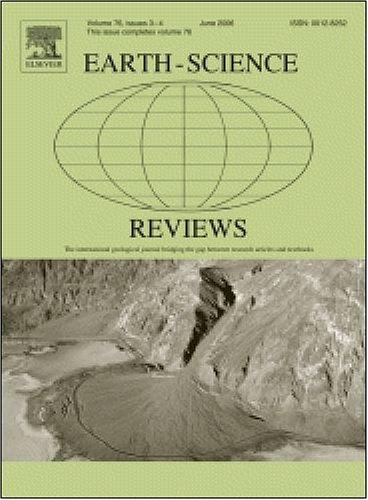The deterioration and collapse of late Permian marine ecosystems and the end-Permian mass extinction: A global view
IF 10.8
1区 地球科学
Q1 GEOSCIENCES, MULTIDISCIPLINARY
引用次数: 0
Abstract
An ever-expanding body of studies has revealed that the evolution of late Permian ecosystems was very complex and possibly involved some yet under-studied ‘early warning signals’ prior to the end-Permian mass extinction. However, the evidence in support of pre-extinction ‘warning signals’ is still limited. In a global review, this paper examined the timing for the initial and peak stages of the late Permian (including the Permian-Triassic boundary interval) biodiversity crisis across different palaeogeographic (palaeobathymetric) settings ranging from pelagic, deep-water basin/deep shelf, through moderately deep-water slope, and to shallow-water carbonate, reef and shallow shelf settings. Based on detailed correlations of globally significant Permian-Triassic sections (20 key sections reviewed) and key stratigraphic boundaries using bio-, chrono- and chemo-stratigraphy, this paper evaluated, summarized and compared the timing and pacing of the environmental and ecosystem deterioration processes in each and among the different palaeogeographic settings and between planktons (mainly radiolarians) and benthos (represented mainly by brachiopods and benthic foraminifers) in deep and moderately deep marine waters. Additionally, where data available we also reviewed the temporal evolution of redox conditions for 17 Permian-Triassic key sections in an attempt to ascertain if there were any notable temporal correlations between these two seemingly separate but potentially mechanistically linked processes. Finally, we also discussed the possible cause-effect and mutually amplifying relationships among volcanism, warming, dynamics of the oxygen minimum zone (OMZ), and the deterioration and final collapse of both marine and terrestrial ecosystems in the late Permian in the lead up to the end-Permian mass extinction.
二叠纪晚期海洋生态系统的恶化和崩溃以及二叠纪末期的大灭绝:全球视角
越来越多的研究表明,二叠纪晚期生态系统的演变非常复杂,可能涉及到二叠纪末期大灭绝之前一些尚未得到充分研究的“早期预警信号”。然而,支持灭绝前“警告信号”的证据仍然有限。在全球范围内,研究了晚二叠世(包括二叠纪-三叠纪边界区间)生物多样性危机的初始阶段和高峰阶段的时间,涵盖了不同的古地理(古水深)环境,包括远洋、深水盆地/深陆架、中等深水斜坡、浅水碳酸盐岩、珊瑚礁和浅陆架环境。基于生物、年代学和化学地层学对全球重要二叠纪-三叠纪剖面(回顾了20个关键剖面)和关键地层边界的详细对比,本文评价:总结和比较了不同古地理背景下深海和中深海浮游生物(主要是放射虫)和底栖动物(主要是腕足类和底栖有孔虫)环境和生态系统退化过程的时间和速度。此外,我们还回顾了17个二叠纪-三叠纪关键剖面的氧化还原条件的时间演化,试图确定这两个看似独立但可能存在机械联系的过程之间是否存在显著的时间相关性。最后,我们还讨论了火山活动、变暖、氧最小带(OMZ)动力学以及二叠纪晚期海洋和陆地生态系统的恶化和最终崩溃之间可能的因果关系和相互放大关系,从而导致二叠纪末的大灭绝。
本文章由计算机程序翻译,如有差异,请以英文原文为准。
求助全文
约1分钟内获得全文
求助全文
来源期刊

Earth-Science Reviews
地学-地球科学综合
CiteScore
21.70
自引率
5.80%
发文量
294
审稿时长
15.1 weeks
期刊介绍:
Covering a much wider field than the usual specialist journals, Earth Science Reviews publishes review articles dealing with all aspects of Earth Sciences, and is an important vehicle for allowing readers to see their particular interest related to the Earth Sciences as a whole.
 求助内容:
求助内容: 应助结果提醒方式:
应助结果提醒方式:


